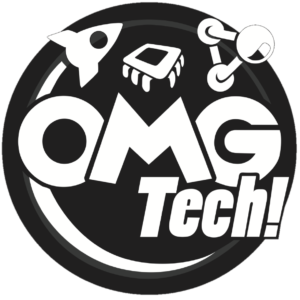FUTURE OF LEARNING
SHOWCASE OF FUTURES-LED THINKING IN EDUCATION
Learning Architecture
WESLEY PRIMARY
Wesley Primary School is in the Manaiakalani Ako Hiko cluster. Their involvement with Manaiakalani gives them access to support with creating and maintaining class Google sites, the cybersmart curriculum, intensive PLD to ensure that all kaiako are digitally literate, and financial support for whānau to purchase devices which results in a 1:1 device to learner ratio.
In addition, the Manaiakalani “learn, create, share” philosophy underpins all learning at Wesley. All ākonga are taught how to create and maintain a personal blog where they share what they are learning. They have agency over the content that they share, and are encouraged to gather and implement feedback from whānau and their community as well as from their kaiako. This is key for fostering agency and a desire to learn in ākonga – the appeal of sharing is a motivating factor to learn and create.
Kaiako Sam Bound, called Whaea Sam by her ākonga, emphasises that learning, creating and sharing do not need to happen in any particular order: Monday mornings at Wesley are usually spent on a group problem-solving activity that falls under “create,” with the learning linked to this activity playing out as the week goes on and shared with whānau by the week’s end. Team teaching at Wesley allows ākonga to participate in a wide variety of self-chosen activities and allows kaiako to share planning and supervision. Classes of similar ages are grouped into teams. For example, the Tākahe team contains year 0-3 ākonga, six kaiako and 5 Learning Assistants working together across three classrooms. At the time of writing, the school is preparing to transition to a new build in which the room design will be more conducive to this way of working.
Whether they are in the classroom or at home, ākonga at Wesley access most of their learning via a Google Slides presentation for each week. This contains links to external learning sites such as Class Dojo and Storychat, and also links to any online resources such as videos or articles that ākonga will need to inform their mahi (work). Ākonga can confidently navigate this platform and describe checking in from home if they are unwell or isolating to “see what’s going on at school.” Where possible, information is presented in multiple ways to help ākonga access and digest it according to how they each learn - for example, ākonga describe watching a video, reading an article, and doing some hands-on building while learning about turbines.
Wesley recognises that an element of hands-on learning is key to keep ākonga engaged, so throughout the school there is a focus on inquiry-based learning with hands-on research and creation elements that are worked on both on and offsite. Ākonga who were interviewed enthusiastically describe using micro:bits and Makey Makey, both of which are handheld computer kits that teach ākonga how software and hardware work together and allow for a creative and exploratory approach to learning to code. Makey Makey can be attached to all sorts of conductive materials, such as fruit and vegetables, which can be used as sensors – for example, bananas as piano keys. There are also hands-on programmes that can only run onsite, such as Garden to Table. In this programme, which each class participates in once per fortnight, ākonga learn to grow food and cook meals from the produce that they have grown. Ākonga report on their offline learning online as part of Learn/Create/Share.
As with all Manaiakalani schools, learning architecture and learner agency at Wesley are deeply intertwined. Wesley uses the Manaiakalani digital infrastructure and populates this with content that is co-constructed by ākonga and their kaiako each term. Kaiako prioritise futures thinking and culturally sustaining practice. Student-led inquiry takes place in each team each term and ākonga ideas are regularly brought to fruition. An example of this is the ākonga-run online broadcast Kea News, which was the brainchild of Kea Team ākonga during lockdown and has since grown into an institution of the Kea Team classes.
In terms of what is next for Wesley, Lou Reddy wants to work on adapting assessment to a hybrid learning context. He explains that traditional assessments such as PAT are difficult to deliver remotely and do not track the skills that ākonga use to engage with hybrid learning, such as digital literacy. E-ASSTLe is designed to be delivered online and therefore more adaptable, but a new obstacle has come up with this assessment type: it does not allow you to input a score of zero. Lou explains that new entrants who missed out on ECE because of the pandemic are coming into Wesley without the ability to identify letters and numbers and are therefore working below the lowest possible E-ASTTLe score. Therefore Wesley is looking into alternative methods of assessment that are wider in scope, as well as deliverable in a hybrid context. This is also linked to an effort at Wesley to move away from assessment questions that can be culturally alienating. Lou mentions that for a long time, kaiako would think that ākonga didn’t understand a maths concept “because the problem in the test was an experience or a statement that had no relationship to their culture or their background.” Wesley kaiako have been working to eliminate this type of question from their own assessment material, but a lack of control over standardised assessment questions is another incentive to move away from PAT and E-ASTTLe.
Besides this, Lou wants to strengthen the current hybrid programme as not all classes are using Google Sites and Class Dojo to their full potential. He explains that content is not always posted daily and “depending on the teacher it may be an informational/static post rather than engaging for learning experiences.” Lou also recognises a need to upskill whānau on using these sites to monitor what their tamariki (children) are learning and support them from home, as parent engagement is currently not consistent.




